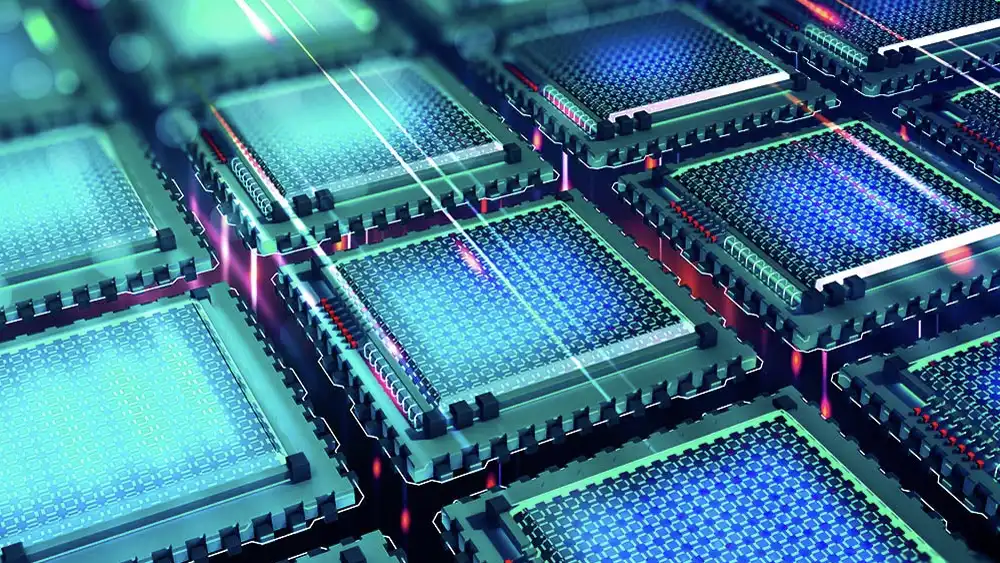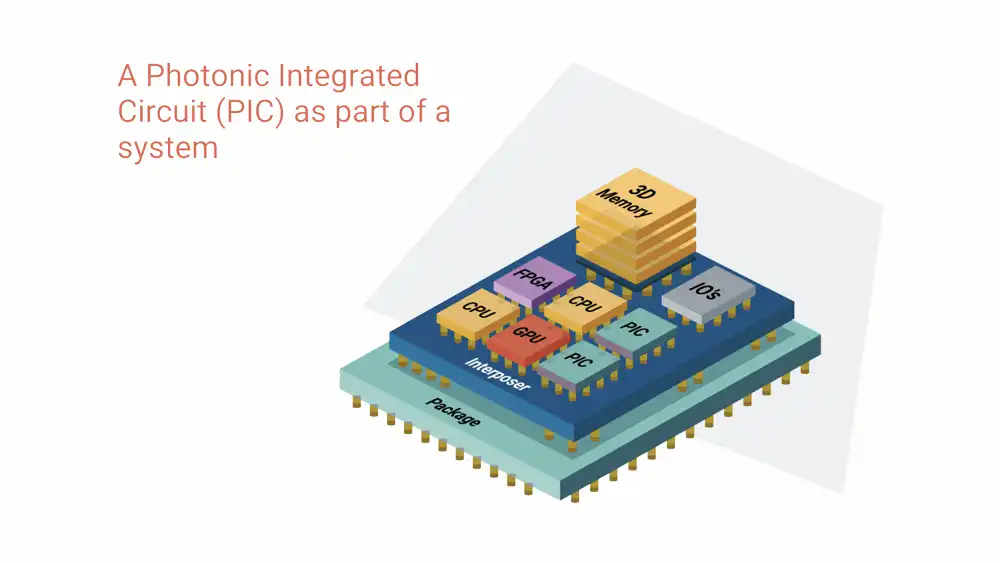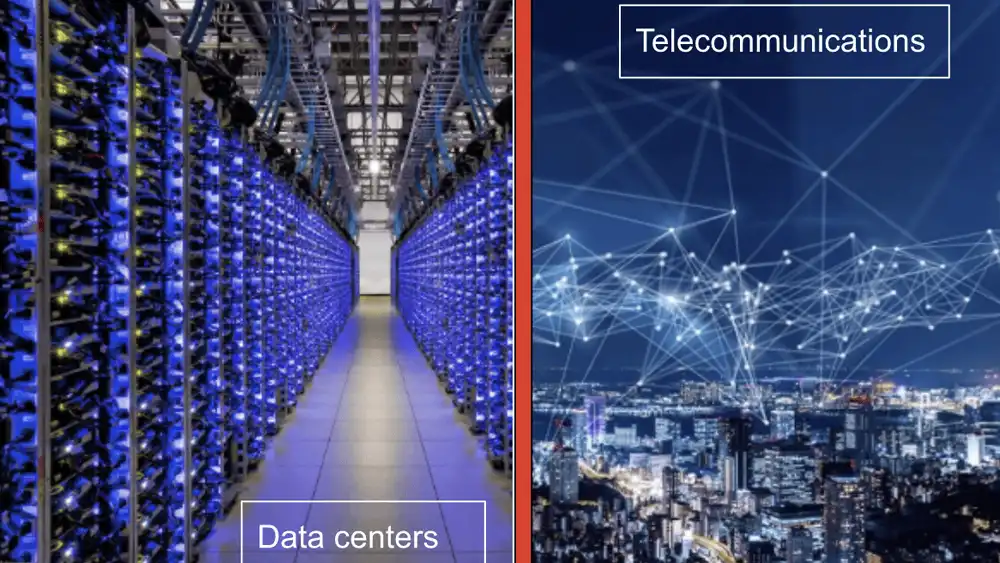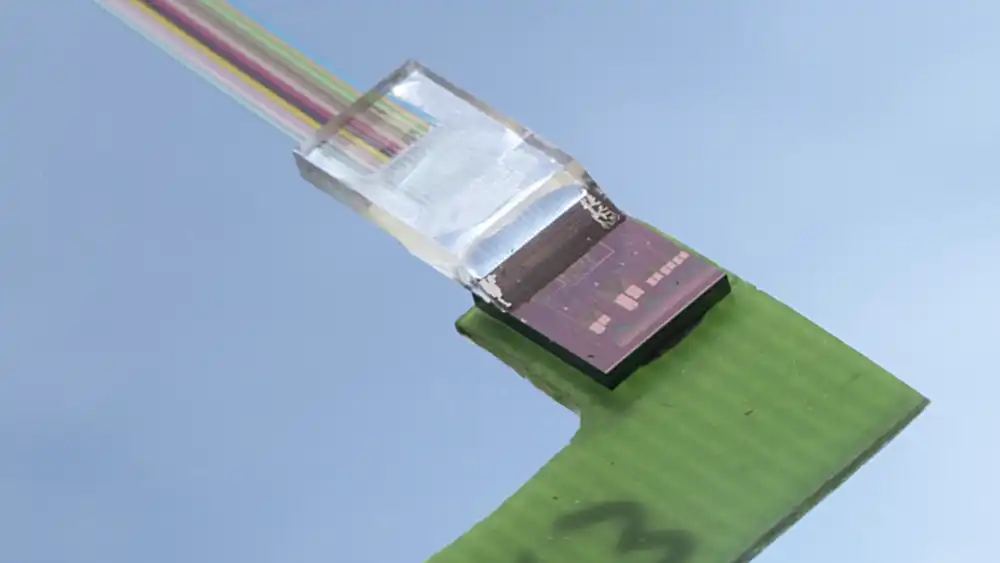What Is Photonic Integrated Circuit

Photonic Integrated Circuit Definition:
Photonic Integrated Circuits (PICs) are microchips that integrate multiple photonic functions, using light (photons) instead of electrical signals to perform optical functions.
These circuits leverage the principles of optics to transmit, manipulate, and process data with high speed and efficiency. PICs are considered a breakthrough technology due to their potential to revolutionize various industries by enhancing the performance and capabilities of optical communication systems.
Importance and Relevance of PICs
The importance of PICs lies in their ability to meet the growing demand for faster, more efficient, and more compact communication systems. As data traffic continues to surge globally, driven by cloud computing, the Internet of Things (IoT), and 5G technologies, the limitations of traditional electronic circuits become apparent. PICs offer a viable solution by providing higher bandwidth, lower power consumption, and greater integration density, making them essential for the future of telecommunications and data processing.
Historical Development and Milestones
Significant milestones have marked the development of PIC technology. The concept of integrating photonic functions onto a single chip emerged in the 1960s, but it was not until the late 20th century that advances in material science and fabrication techniques made PICs feasible.
The first commercial PICs appeared in the 1980s, primarily in telecommunications. Since then, the field has seen rapid progress, with key developments such as silicon photonics, advancements in fabrication techniques, and the integration of PICs with electronic circuits, paving the way for modern applications.
Optical Integrated Circuits

Optical integrated circuits (PICs), also known as photonic integrated circuits, are microchips that contain light-guiding components. Unlike traditional electronic integrated circuits (ICs) that use electrons, PICs use photons or light particles to transmit, process, and sense information.
PICs are miniature versions of optical systems and offer several advantages over conventional electronic circuits, including:
- Higher bandwidth: Photons travel at the speed of light, allowing PICs to handle much larger amounts of data than electronic circuits.
- Lower power consumption: PICs suffer from minimal signal loss, making them more energy efficient.
- Reduced size and weight: By integrating various optical components onto a single chip, PICs can be significantly smaller and lighter than their electronic counterparts.
- ** immunity to electromagnetic interference (EMI):** Since they use light instead of electricity, PICs are not susceptible to EMI.
PICs are still a relatively new technology, but they have the potential to revolutionize various industries, including:
- Telecommunications: PICs can be used to develop faster and more efficient optical communication networks.
- Computing: PICs can be used to create high-performance optical interconnects for computer systems.
- Biosensing: PICs can be used to develop miniaturized and sensitive biosensors for medical diagnostics and environmental monitoring.
- Consumer electronics: PICs could be used in future generations of smartphones, tablets, and other consumer devices to enable faster data transfer and improved functionality.
Technical Specifications
Components of a Photonic Integrated Circuit
A PIC typically comprises various components that perform specific optical functions. These include:
- Waveguides: Channels that direct the light within the circuit.
- Modulators: Devices that encode data onto the light waves.
- Photodetectors: Components that convert light back into electrical signals.
- Lasers: Light sources that provide the initial optical signal.
- Multiplexers/Demultiplexers: Devices that combine or separate multiple wavelengths of light.
Materials Used in PICs
PICs are made from various materials, each chosen for its optical properties. Common materials include:
- Silicon: Widely used due to its compatibility with existing semiconductor fabrication processes.
- Indium Phosphide (InP): Preferred for high-performance telecommunications applications.
- Silicon Nitride (SiN): Used for specific optical functions due to its low loss and wide transparency range.
- Lithium Niobate: Known for its excellent electro-optic properties, used in modulators.
Fabrication Techniques
The fabrication of PICs involves advanced semiconductor manufacturing processes, such as:
- Photolithography: A process to pattern intricate designs onto the chip.
- Etching: Techniques like reactive-ion etching (RIE) to shape the photonic structures.
- Deposition: Methods such as chemical vapor deposition (CVD) to add material layers.
- Doping: Introducing impurities into the material to modify its optical properties.
Design Considerations
Designing a PIC requires careful consideration of various factors to ensure optimal performance, including:
- Waveguide Design: Ensuring minimal loss and efficient light transmission.
- Thermal Management: Addressing heat dissipation to maintain performance.
- Integration: Combining multiple photonic and electronic components on a single chip.
- Scalability: Designing for mass production and future upgrades.
Performance Metrics
Key performance metrics for PICs include:
- Insertion Loss: The loss of signal power as light travels through the circuit.
- Bandwidth: The range of frequencies the PIC can handle.
- Power Consumption: The amount of electrical power required to operate the PIC.
- Reliability: The long-term stability and durability of the PIC under operating conditions.
Photonic Integrated Circuit Applications

Telecommunications
In telecommunications, PICs are used to enhance the capacity and speed of optical networks. They enable dense wavelength division multiplexing (DWDM), which increases data transmission rates by carrying multiple wavelengths on a single fiber, thus significantly boosting the bandwidth.
Data Centers
Data centers benefit from PICs through improved data transfer speeds and reduced power consumption. PICs facilitate high-speed optical interconnects, which are essential for handling the massive data flows within and between data centers, thereby enhancing overall efficiency.
Sensing and Imaging
PICs are used in various sensing applications, including environmental monitoring, industrial sensing, and medical diagnostics. Their ability to detect and analyze light makes them ideal for high-precision imaging systems, such as those used in spectroscopy and lidar.
Quantum Computing
In quantum computing, PICs play a crucial role by enabling the manipulation and detection of quantum states of light. They are used to build quantum circuits that can process information much faster and more securely than traditional computers.
Biomedical Applications
PICs are revolutionizing biomedical applications by enabling advanced diagnostic tools and therapeutic devices. They are used in biophotonics for imaging, sensing, and therapeutic interventions, providing high-resolution, non-invasive medical diagnostics and treatments.
Defense and Aerospace
In defense and aerospace, PICs provide robust, high-speed communication systems that are crucial for mission-critical operations. Their ability to operate under harsh conditions makes them suitable for applications such as secure communications, radar, and avionics systems.
Consumer Electronics
PICs are making their way into consumer electronics, offering enhanced performance for devices such as smartphones, wearables, and virtual reality systems. They provide higher data transfer rates and more efficient signal processing, leading to better user experiences.
Benefits of Photonic Integrated Circuit
Speed and Bandwidth
PICs offer unparalleled speed and bandwidth, making them essential for high-speed data transmission. By using light to transmit data, PICs can achieve much higher frequencies than electronic circuits, resulting in faster data transfer rates and greater bandwidth capacity.
Power Efficiency
PICs are more power-efficient than electronic circuits because they require less energy to transmit data over long distances. This efficiency is particularly beneficial in data centers and telecommunications, where reducing power consumption is a major concern.
Integration and Miniaturization
The integration of multiple photonic functions onto a single chip allows for significant miniaturization of devices. This integration reduces the need for bulky optical components, leading to more compact and lightweight systems.
Cost-Effectiveness
While the initial development of PICs can be expensive, their ability to integrate multiple functions onto a single chip ultimately leads to cost savings. Mass production of PICs using established semiconductor fabrication techniques further reduces costs.
Reliability and Longevity
PICs are highly reliable and have long operational lifespans. Unlike electronic circuits, they are less susceptible to electromagnetic interference and can operate in harsh environments, making them ideal for various applications.
Comparative Analysis
PICs vs. Electronic Integrated Circuits
PICs differ from electronic integrated circuits in several ways. While electronic circuits use electrons to transmit data, PICs use photons, resulting in higher speed and bandwidth. However, electronic circuits are currently more mature and widely used, with well-established fabrication processes and standards.
PICs vs. Discrete Optical Components
Compared to discrete optical components, PICs offer greater integration and miniaturization. Discrete components require more space and are less efficient in terms of power consumption and data transmission. PICs provide a more compact and efficient solution, integrating multiple functions onto a single chip.
Diode Laser and Photonic Integrated Circuit

Diode Laser
A diode laser is a type of laser where the active medium is a semiconductor similar to that found in a light-emitting diode (LED). These devices are widely used due to their compact size, efficiency, and the ability to produce coherent light.
Key Features of Diode Lasers:
- Structure: They typically consist of a p-n junction, where the recombination of electrons and holes results in the emission of light.
- Wavelengths: Diode lasers can be designed to emit light in a wide range of wavelengths, from infrared to ultraviolet.
- Efficiency: They are highly efficient in converting electrical energy into light.
- Applications: Used in various applications including telecommunications, medical devices, barcode readers, laser pointers, and optical storage devices like CD/DVD players.
Working Principle:
- When a forward bias is applied across the p-n junction, electrons from the n-side and holes from the p-side recombine in the active region.
- This recombination releases energy in the form of photons, generating light.
- The optical cavity formed by reflective surfaces on both ends of the diode helps amplify the light by stimulated emission, producing coherent light output.
Photonic Integrated Circuit (PIC)
A Photonic Integrated Circuit (PIC) is an integrated circuit that utilizes photonic components to perform optical functions, analogous to how electronic integrated circuits (ICs) use electronic components.
Key Features of PICs:
- Integration: Incorporates multiple photonic functions on a single chip, such as lasers, modulators, detectors, and waveguides.
- Materials: Often fabricated from materials like indium phosphide (InP), silicon-on-insulator (SOI), or silicon nitride.
- Applications: Used in telecommunications, data centers, medical imaging, and sensors due to their ability to handle high bandwidths and data rates.
Advantages of PICs:
- Compactness: Integrating multiple components reduces the size and weight of optical systems.
- Performance: Provides high-speed data processing and transmission capabilities.
- Power Efficiency: Consumes less power compared to traditional optical systems.
- Scalability: Easier to scale up the number of optical functions within a single chip.
Combining Diode Lasers and PICs
Diode lasers are often integrated into PICs to enhance functionality and efficiency. For example, in telecommunications, diode lasers can serve as the light source in a PIC for data transmission, where the PIC can perform additional tasks like modulation, wavelength division multiplexing (WDM), and detection.
Integration Benefits:
- Improved Performance: The integration reduces losses and improves the overall efficiency of the system.
- Reduced Cost: Lower manufacturing and operational costs due to the integration of multiple functions on a single chip.
- Enhanced Reliability: Fewer discrete components mean fewer potential points of failure, increasing the system’s reliability.